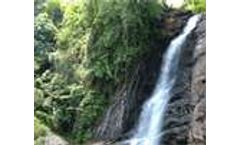Timber Production Articles & Analysis
20 articles found
Growing pains: As companies grow and product lines scale, there is often a call to digitise and streamline operations. This case study explores the success of a London-based luxury wood retailer, who we’ll call LuxWood (a pseudonym used at the request of the company). Prioritising design innovation and quality, the company requested a tailored CAD software solution from Cadlogic to address ...
Women and food-centric interventions through the NATURE+ Initiative aim to increase the resilience of rural women. This years’ International Day of Rural Women puts a spotlight on, “Rural Women Cultivating Good Food for All.” The CGIAR Initiative on Nature-Positive Solutions (NATURE+) aims to re-imagine, co-create and implement nature-positive, solutions-based agri-food systems ...
From then, we built a sawmill and began to cut and provide timber products, with the installation of our first Biomass fuelled boiler in the late '80s for kiln ...
An second impregnation plant was sent to China, after the first delivered and installed in ...
We have delivered with satisfaction the first LOSP impregnation treatment plant for a large company in ...
If you are looking for a classic example of the circle of life, consider the forest canopy structure. A forest’s canopy structure is influenced by environmental and soil factors, and it also influences these factors in return. It is an aspect of forest ecology that is receiving more attention in this age of climate change emergency. The canopy structure is often overlooked, with most of the ...
As a matter of fact the environmental benefits of using timber are not straightforward: although it is a natural product, a large amount of energy is used to dry and process it. ...
They contain huge hardwood trees, as well as a wide range of non-timber products including palm leaves and rattan — even salt from brine springs located deep in the forest. ...
The fine mosaic of tree cover loss (pink) and gain (blue) in the above map shows how forests throughout this region are used as crops, grown and harvested in five-year cycles to produce timber or wood pulp for paper production. In fact, between 2000 and 2012, nearly one-third of the tree cover in this region was either lost or regrown. This practice of ...
The EUTR requires the establishment of a due diligence system by organizations involved in the placement of timber/timber products on the EU market. The SGS 'Best Practice Implementation of the European Timber Regulations Due Diligence Requirements' guidebook helps you set-up your due diligence system and ensure compliance ...
BySGS
The global market for wood and other forest products is changing quickly. The industry has long struggled to address the problem of illegal logging, which damages diverse and valuable forests and creates economic losses of up to $10 billion a year. ...
Rising property taxes also reduce the profitability of timber production and induce corporate and industry landowners to engage in real estate sales as an alternative activity. ...
To date, traditional public land acquisition programs have played a relatively small role in the conservation and sustainable management of southern U.S. forests. The South trails behind other U.S. regions in both the percent of the land base and the acres per capita conserved in parks, wildlife refuges, wilderness, and other protective categories. Working forests offer a new model for scaling ...
To date, traditional public land acquisition programs have played a relatively small role in the conservation and sustainable management of southern U.S. forests. The South trails behind other U.S. regions in both the percent of the land base and the acres per capita conserved in parks, wildlife refuges, wilderness, and other protective categories. Working forests offer a new model for scaling ...
The results show that the total net present value (NPV) of timber and water production profits would be reduced by up to 25.3% when area and timber volume policy constraints are incorporated into an unconstrained forest management planning model. The results also indicate that, if forests are managed to meet some forest management policy ...
Model outputs as Net Present Value (NPV) and amounts of timber and water were used as performance indicators. The results showed that water production aimed strategies (*W) provided minimum timber production while timber production aimed strategies (*T) obtained minimum water ...
If reducing emissions from deforestation and forest degradation (REDD) is to work effectively, developing countries will need support to build the capacities required for enforcing their own laws and regulations. At present, timber production that violates the developing country’s own laws both acts as a barrier to REDD and costs these countries billions of ...
The pressure on the state's forests for the collection of fuel wood, fodder and other Non-Timber Forest Products (NTFPs) is, therefore, very severe. A study was undertaken during ...
Communities may also be keen to be involved in forest management to gain access to various non-timber products, including valuable resources such as fruits, fodder and handicraft materials which can help alleviate poverty. ...
The findings from diverse ecological regions of South and Southeast Asia have demonstrated that community forestry has resulted in significant increase in plant diversity and biomass production. In this region, over 25 Mha of degraded forestland and fragile ecosystems have been regenerated to meet the economic and ecological needs of local communities, along with increase in ...












